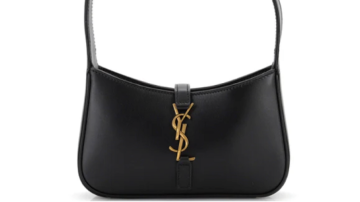Streetwear, a notorious boys’ club, is spending more time in the spotlight of mainstream fashion as heavyweight Supreme rises to billion-dollar brand status and retailers like Bergdorf Goodman carry inventory from Kith. But is women’s streetwear rising along with it? In this series, we’ll ask women inside streetwear to weigh in on the current standing and potential for their category.
For a head of a streetwear label, Leah McSweeney is still pretty confused about where women’s clothing fits into the broader streetwear culture — and frustrated about why women’s brands aren’t bigger than they are.
“I don’t know why more women don’t launch streetwear brands. I’ve always wondered about it. Maybe it’s because streetwear is seen as for the boys,” said McSweeney, the head of Married to the Mob. She added that women’s streetwear hasn’t yet formed a clear identity. “I don’t know how womenswear fits [into streetwear], because I don’t truly know what women’s streetwear is. Do you know? I don’t know.”
McSweeney doesn’t mince words about how the streetwear industry excludes women.
“A brand like Supreme doesn’t make women’s clothing because they don’t have to. All everyone cares about is the logo. So you have women wearing men’s streetwear,” she said. “But then, in a male-dominated industry — a male-dominated world — people look at those women and say, ‘When is this girl going to stop trying to be one of the guys?'”
McSweeney, who’s designed collaborations with brands and retailers including MCM, Reebok, Nike and Colette, spoke to Glossy about streetwear’s convergence with the mainstream, what that means for women in the industry, and what Supreme’s now billion-dollar status signifies for other streetwear brands.
How do you explain the current, mainstream interest in streetwear?
Streetwear has meaning behind it. Streetwear has music, art and personality behind it. There’s a complete crossover between high fashion and streetwear; streetwear used to get inspiration from high-fashion companies, and they would get shit for that. Now, those tables have turned. Riccardo Tisci was one of the first people to take influence from urban fashion and implement it in high fashion. That felt genuine. He’s a visionary, and it was inspiration, rather than desperation. But in terms of how many brands will be successfully collaborating together, I don’t know how much of that will really be happening. Louis Vuitton and Supreme felt like a disaster.
OK, a disaster. So what about the retailers like Barneys and Bergdorf that have started selling streetwear?
[Retailers] can try to borrow it, but do I think it’s authentic or appealing? No. I had a meeting with the creative director of Barneys around 2008, and she said to me, “I love your stuff, and I wish we were like a Colette and could carry it — but we can’t, because we’re a department store.” But now, 10 years later, they’re realizing they need us. It’s a little desperate. It’s late. It shows how they’re struggling to find identity and authenticity and some way to connect to the youth. Who’s actually shopping at Barneys? What can I buy there? It seems like it’s jumping on the bandwagon.
Do you think the attention being paid to streetwear right now will help bring attention to women’s brands?
Honestly, probably not. Everyone’s just talking about Supreme, and to me, Supreme barely counts as streetwear anymore because it’s such an anomaly. You can’t compare any other brand in the industry to them. And it’s always going to be different and feel different for women in streetwear. Women’s brands have to compete with Zara and H&M. Women shop differently than men. You don’t see many women lining up down the block; they’re not that brand-loyal. I have core customers who are loyal, and that’s the only reason why I’m still in business. But for everyone else, it’s like, how am I going to sell you a $32 T-shirt when there are so many other options, cheaper options out there? I have to stand out so much more to make sure I get that sale.
Why do the women’s collections from big-name brands like Kith rarely work?
What people don’t understand and why all these giant brands are missing the mark is because they’re not communicating to women consumers properly, and women are getting fucking sick of it. These men’s brands that are creating women’s stuff are so stupid. The problem is that women want to wear the men’s stuff. If you’re a woman interested in streetwear, you don’t want a women’s sweatshirt. You don’t want to wear a Kith Women’s sweatshirt. It’s because they’re speaking to men and women differently, and women’s clothes are an afterthought. I want to wear the same shit the men are wearing.
Supreme is now worth $1 billion. Won’t that help lead investors, and help boost women’s streetwear?
It helps Mob, because it legitimizes Supreme and it legitimizes the space; it validates the other brands, even the ones that aren’t doing as much money as Supreme. There’s not a “next Supreme,” but investors, bankers, whoever-the-fuck will be saying, “We need a brand like this. Even if they can’t be a billion-dollar brand, we could have a $100 million brand.” And that could be a big deal.



